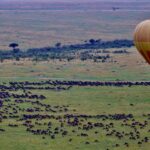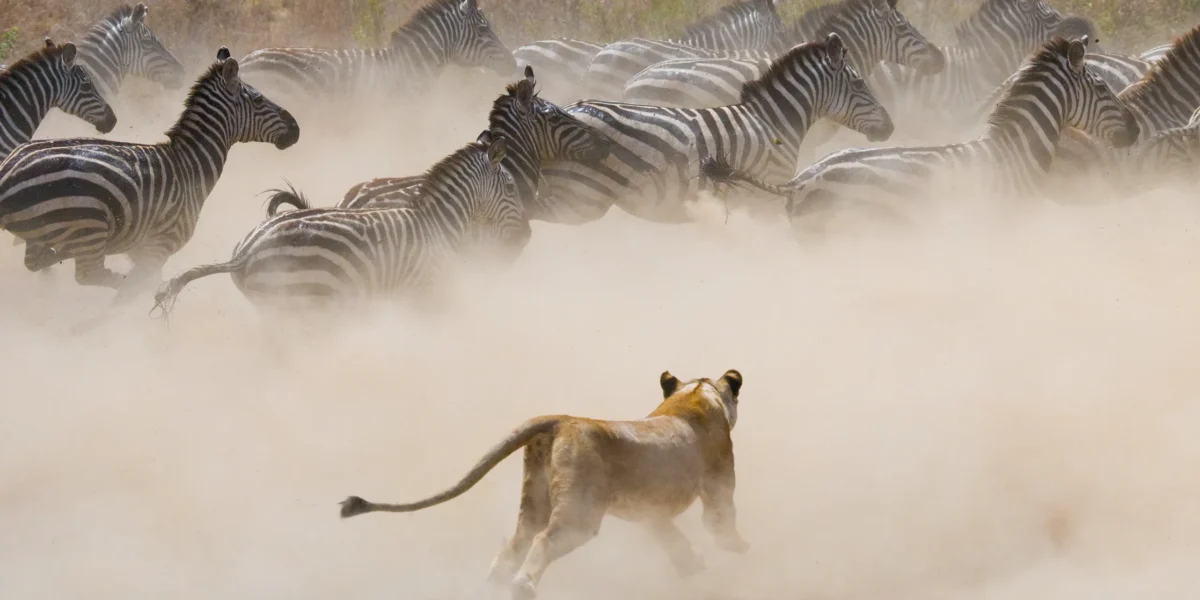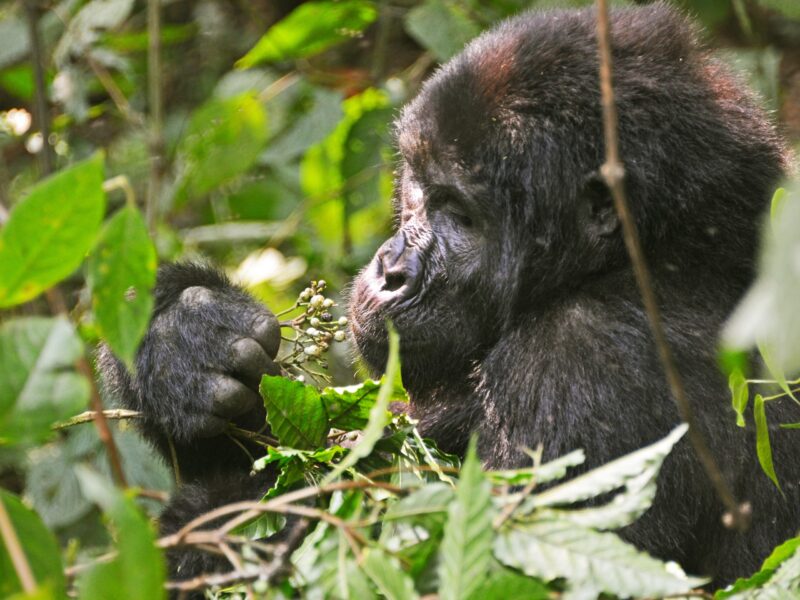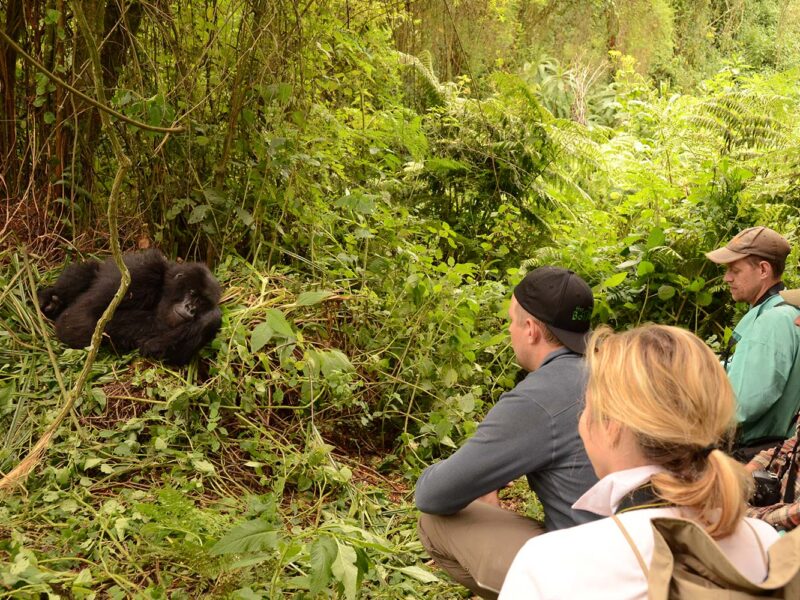
Can I Do a Hot Air Balloon Safari During the Great Migration?
October 3, 2025How Much Does Chimpanzee Tracking Cost?
October 7, 2025Do Predators Follow the Great Migration?
Do predators follow the Great Migration? This is one of the most asked questions by travelers and safari enthusiasts who dream of witnessing Africa’s greatest wildlife spectacle. The Great Migration is a breathtaking natural phenomenon where millions of wildebeest, zebras, and gazelles move across the Serengeti in Tanzania and the Maasai Mara in Kenya in search of greener pastures and water. This cyclical movement, driven by seasonal rains, is not just about herbivores on the move—it is also a stage for dramatic predator-prey encounters. Lions, leopards, cheetahs, hyenas, and crocodiles all play a major role in this story, following the herds and shaping the rhythm of survival in the wild.
Understanding the Great Migration and Its Connection with Predators
At Winton Africa Safaris, we know that travelers don’t just want to see animals; they want to understand the deeper connection between species, the ecosystems they inhabit, and the authentic experiences that make Africa unique. That is why we explore this important question: Do predators follow the Great Migration? The answer reveals much about predator behavior, survival strategies, and the ultimate balance of nature. For safari-goers, this knowledge is essential in planning the best Uganda Safaris, Uganda Gorilla Safaris, Uganda Wildlife Safaris, and even combined East African journeys that link the migration with Uganda Gorilla Trekking Safaris and cultural adventures. This introduction sets the stage for an insightful exploration that will enrich your safari expectations, build trust in Winton Africa Safaris as an authoritative voice in African tourism, and highlight why understanding predator movements makes your safari experience unforgettable.
The Circle of Life: How Predators Respond to the Migration
Do predators follow the Great Migration? The answer lies in the timeless “circle of life.” Every year, over two million animals cross the savannah in a clockwise journey that takes them from the Serengeti plains to the lush fields of the Maasai Mara and back. For predators, this is not just a spectacle but a critical opportunity for survival. Lions set up ambushes on the plains, cheetahs rely on speed to chase calves and foals, and hyenas track the herds relentlessly, feeding on the vulnerable. Crocodiles, waiting in the Mara River, create some of the most dramatic moments of the entire migration, launching themselves from the water to drag wildebeest and zebra into the depths.
From an ecological perspective, predators indeed follow the Great Migration, but not always in the way travelers might imagine. Lions, for example, are territorial and do not travel long distances with the herds. Instead, the herds move through lion territories, providing a steady supply of food. Cheetahs and hyenas, however, are more mobile, often shadowing the herds as they migrate. Crocodiles are permanent residents of the rivers, and the herds bring food directly to them during river crossings.
For travelers planning Uganda Wildlife Safaris or Uganda Birding Safaris, understanding predator behavior adds depth to the journey. You can witness how nature balances itself—herbivores move to survive, and predators adapt to their movements. By asking, Do predators follow the Great Migration?, you are not just seeking an answer but entering a story of resilience, survival, and interconnectedness that makes safaris across East Africa profound and transformative.
The Big Cats of the Migration: Lions, Leopards, and Cheetahs
Do predators follow the Great Migration when it comes to the big cats? Absolutely, but each cat species has its own strategy. Lions, the undisputed kings of the savannah, thrive during the migration. With thousands of wildebeest calves born on the Serengeti plains between January and March, lions find abundant prey to feed their prides. Unlike cheetahs, lions are territorial and rely on the herds passing through their land, meaning they wait for the migration rather than following it extensively. This territorial behavior makes planning Uganda Best Safaris or East African itineraries crucial, as travelers need to be in the right place at the right time to witness these powerful encounters.
Cheetahs, the fastest land animals, have a different approach. They are less restricted by territory and more inclined to follow the migration. Their hunting technique—sprinting at incredible speeds—makes young or weak animals their primary targets. During the migration, cheetah sightings increase because of the abundance of vulnerable prey. Leopards, on the other hand, remain elusive. While they do not actively follow the herds, they exploit opportunities when wildebeests and zebras wander into their forested territories.
For safari-goers seeking to combine Uganda Gorilla Trekking Safaris with the Great Migration, the big cat experience adds another dimension. Seeing gorillas in Uganda’s Bwindi Impenetrable Forest provides a rare primate adventure, while witnessing lions hunt on the open plains creates a thrilling contrast. By asking, Do predators follow the Great Migration?, you open the door to understanding how different big cats coexist with the herds, each adapting their survival strategies to the rhythms of Africa’s greatest wildlife movement.
The Mara River Drama: Crocodiles and the Ultimate Ambush
Do predators follow the Great Migration into the rivers? The Mara River is perhaps the most famous stage for predator-prey encounters during the migration. Here, Nile crocodiles—some of the largest reptiles in the world—wait patiently as hundreds of thousands of wildebeest and zebras attempt the perilous crossing. The moment is both terrifying and awe-inspiring. Crocodiles may not “follow” the migration in the sense of movement, but they rely on it completely for sustenance. These reptiles can go months without feeding, storing energy for the dramatic feasts that happen once the herds plunge into the river.
Travelers often associate this scene with the most intense wildlife photography opportunities. The fear in the eyes of the wildebeest, the thunder of hooves on the banks, and the sudden ambush of crocodiles create unforgettable safari memories. This is the perfect answer to the question: Do predators follow the Great Migration? While crocodiles don’t migrate themselves, their lives are synchronized with the cycle of the migration, showing how predator and prey are bound together in nature’s design.
For travelers booking Uganda Gorilla Safaris or Uganda Chimpanzee Safaris, combining these experiences with a trip to witness the Mara River crossing enhances your journey. The intimacy of watching gorillas interact in family groups in Uganda is beautifully contrasted with the raw survival battles on the plains of Kenya and Tanzania. This dual experience highlights the diversity of African safaris, positioning Winton Africa Safaris as your trusted guide to both primate encounters and predator drama.
Hyenas and Wild Dogs: The Opportunistic Hunters
Do predators follow the Great Migration when it comes to hyenas and African wild dogs? The answer is yes, in their own opportunistic way. Hyenas are resourceful predators and scavengers. During the migration, they take advantage of the chaos, targeting weak or injured animals. They are also skilled hunters, working in packs to bring down wildebeests with surprising efficiency. Unlike lions, hyenas are not strictly territorial and may shadow the herds for extended periods, ensuring a steady supply of food.
African wild dogs, also known as painted wolves, are rarer but equally fascinating to watch. Their cooperative hunting strategies allow them to chase prey over long distances, making them well-suited to follow the migration paths. Although sightings of wild dogs during the migration are less common than those of hyenas or lions, witnessing their hunts is an extraordinary privilege for safari travelers.
By exploring the question, Do predators follow the Great Migration?, we see how different predator species employ unique survival strategies. For travelers seeking immersive experiences, combining predator-focused game drives with Uganda Cultural Safaris creates a meaningful safari. After witnessing the raw power of predator-prey interactions on the Serengeti, you can explore Uganda’s rich traditions—meeting the Batwa people near Bwindi, learning about the Ankole cattle herders, or experiencing Kampala’s vibrant urban culture. This combination demonstrates that safaris are not just about wildlife but also about understanding the human heritage that coexists with it.
Beyond the Migration: Combining Gorilla Trekking with Predator Safaris
Do predators follow the Great Migration, and can travelers combine this experience with other safaris in East Africa? Absolutely. One of the most rewarding safari itineraries is combining the migration in Kenya or Tanzania with Uganda Gorilla Trekking Safaris. After witnessing the drama of predators hunting on the plains, heading to Uganda for gorilla trekking in Bwindi or Mgahinga offers a completely different kind of adventure—intimate, peaceful, and deeply moving.
This combination allows travelers to experience the full spectrum of African wildlife: the adrenaline of predator-prey encounters and the emotional connection of looking into the eyes of a mountain gorilla. Alongside gorillas, Uganda also offers Uganda Birding Safaris, Uganda Wildlife Safaris, and Uganda Chimpanzee Safaris, making it a destination that complements the migration perfectly.
At Winton Africa Safaris, we believe in designing journeys that answer deeper questions. By asking, Do predators follow the Great Migration?, travelers learn how interconnected Africa’s ecosystems are. By combining Uganda Gorilla Safaris with the Great Migration, travelers move beyond just ticking animals off a list—they engage with the rhythm of life itself, making their safari experience not just memorable but transformative.




